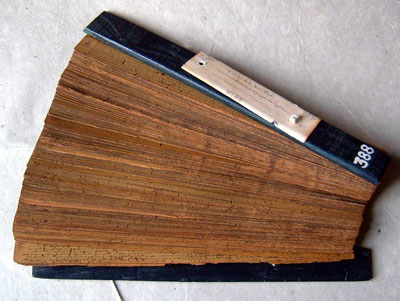Supervisors: Saroja Bhate, Pune University; Pascale Haag-Bernède, École des hautes études en sciences sociales, Paris; Vincenzo Vergiani, University “La Sapienza”, Rome.
IT supervisor: Marc Csernel INRIA Paris
Project Advisor: Dr. J. D. Smith, Oriental Studies, Cambridge; Professor C. Minkowski, University of Oxford.
The Kāśikāvrtti of Vāmana and Jayāditya (7th Century) is the oldest surviving commentary covering the whole of Pānini’s grammar, the Astādhyāyī. In the present phase, this joint project aims at producing the critical edition of the first chapter of this important text while developing IT tools in collaboration with the INRIA, which scholars will be able to use for the edition of other works.
The project involves scholars from the Bhandarkar Oriental Research Institute (Pune), the École française d’Extrême-Orient (Pondicherry/Pune), the École des hautes études en sciences sociales (Paris), the National School for Telecommunication (ENST Brest) the French National Institute for Research in Computer Science and Control (INRIA, Paris), the Mahendra Sanskrit University (Kathmandu) and the University “La Sapienza” (Rome).
The tools which will be developed by the INRIA will allow a computer-based comparison of many versions of the same Sanskrit text with a view to producing a critical edition. Such a tool should make it faster and easier to edit Sanskrit texts that have been transmitted in a large number of manuscripts. The ENST will build phylogenetic trees between manuscripts in order to establish the probable relations between them. The project thus combines the production of a critical edition – a traditional concern in Sanskrit studies – with the study of the history of manuscript transmission and the analysis of Asian texts using IT technologies.

Photo: Manuscript of the Kāśikāvrtti in grantha script. Private collection.
Tiruvatuturai (Tamil Nadu).
DOWNLOADS:
LINKS:

